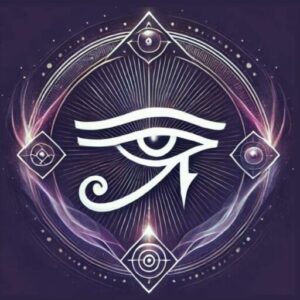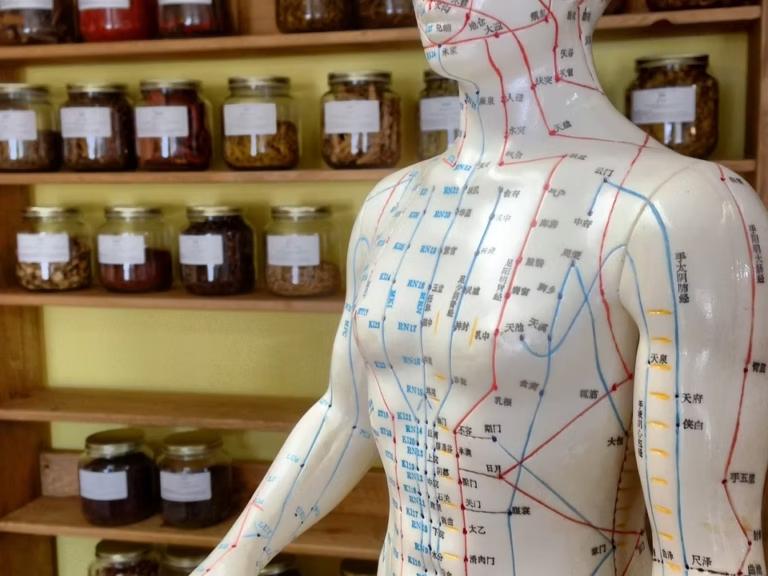
There’s an intriguing challenge within the field of philosophy and neuroscience known as the hard problem of consciousness. This concept, introduced by philosopher David Chalmers, explores the difficulty in understanding how the brain’s physical processes translate into subjective experiences. He emphasizes that while scientists can map neural activities to mental states, the core question remains: why do these processes produce the rich tapestry of experiences that humans encounter? This blog post researches into the complexities of this phenomenon, examining theories, implications, and ongoing debates surrounding consciousness.
Key Takeaways:
- The Essence of the Hard Problem: The Hard Problem of Consciousness, as articulated by philosopher David Chalmers, highlights the difficulty in explaining how physical processes in the brain translate into subjective experiences. This gap in understanding raises foundational questions about the nature of awareness and perception.
- Proposed Solutions and Skepticism: One intriguing theory aimed at addressing the Hard Problem is panpsychism, which posits that consciousness might be a fundamental component of the universe. However, this idea remains contentious and is often viewed more as philosophical speculation rather than a scientifically verifiable explanation.
- Implications for Understanding Consciousness: The exploration of the Hard Problem not only emphasizes the complexity of consciousness but also invites interdisciplinary dialogue among neuroscientists, philosophers, and cognitive scientists. This ongoing inquiry shapes our understanding of the mind and may ultimately influence advancements in related fields, such as artificial intelligence and psychology.
Defining Consciousness
While the quest to define consciousness has engaged scholars for centuries, a universally accepted definition remains elusive. Consciousness typically refers to the state of being aware of and able to think about one’s own existence, sensations, thoughts, and surroundings. It is an intricate tapestry woven from the interplay of neurobiological processes and subjective experience. Despite advancements in neuroscience and philosophy, the precise nature of consciousness continues to inspire debate and inquiry, reflecting the complexities that underlie human cognition and self-awareness.
Subjective Awareness
On the surface, subjective awareness seems simple; it encompasses the personal experience of perceiving the world and oneself. This internal narrative is unique to each individual, manifesting through thoughts, emotions, and sensory perceptions. Scholars such as David Chalmers have highlighted the challenge of understanding why these neural activities elicit a vivid sensory experience, raising profound questions about the essence of subjective awareness itself and its place in the broader context of consciousness studies.
The Complexity of Experience
Experience plays a pivotal role in shaping one’s consciousness, yet the nuances of this complexity often exceed straightforward understanding. The wide spectrum of feelings and sensations arises from intricate neurological processes, which interact dynamically to create the rich tapestry of human experience. This complexity becomes evident when one considers how collective thoughts and feelings emerge from simple neural interactions, challenging scholars to unravel how unity in consciousness is achieved from such diversity.
It is this convergence of processes that begs deeper exploration, particularly when attempting to decode the binding problem in consciousness studies. Researchers have long pursued answers to how the brain integrates disparate sensory inputs into a seamless experience of reality. By investigating the dynamics of neural networks and their correlations with subjective experiences, they aim to illuminate the mechanisms that underpin the sense of self and cohesive awareness, thereby unveiling more layers of the complex phenomenon of consciousness.
The Hard Problem of Consciousness Explained
Now, the hard problem of consciousness presents a unique challenge in understanding the intricacies of human awareness. This dilemma centers on the distinction between physical processes that occur within the brain and the subjective experiences that individuals encounter every day. While scientists have made strides in identifying various neural correlates of consciousness, the leap from electrochemical activity in the brain to the rich tapestry of thoughts, feelings, and perceptions remains unexplained. As philosopher David Chalmers articulated, understanding the brain’s workings is not sufficient if one cannot explain how these physiological processes translate into personal experiences like joy, love, or the flavor of a strawberry.
Physical Processes vs. Subjective Experience
The brain operates as a complex network of neurons communicating through electrical and chemical signals. However, this intricate activity does not inherently convey what it is like to experience those signals on a personal level. They might observe the brain’s synaptic transmissions and functional imaging, but the qualitative nature of subjective experiences eludes a purely scientific explanation. It prompts the question: how do neurons firing in unison lead to the feeling of warmth on the skin or the sight of vivid colors? This incongruity between the observable and the experiential illustrates why the hard problem of consciousness endures as a focal point of philosophical inquiry.
The Gap in Understanding
Below the surface of neural activities lies a significant gap in understanding consciousness. While researchers have explored various theories, such as panpsychism, which suggests that consciousness exists at every level of reality, they still grapple with the profound question of how these experiences arise. The physical actions of neurons and their interactions in the brain do not provide insight into the richness of sensory experience or emotional depth that individuals encounter daily. Shedding light on this gap involves integrating knowledge across neuroscience, philosophy, and cognitive science, yet it remains an elusive target that often leads to more questions than answers.
Problem areas in the philosophy of mind highlight that even with advancements in brain imaging and understanding neural pathways, a comprehensive framework for explaining consciousness as an experiential phenomenon has yet to materialize. Researchers continue to confront the complexities of the subjective narrative weaves through their neural processes, illustrating the need for a multidisciplinary approach to address this ongoing puzzle.
Proposed Solutions
Unlike many areas of scientific inquiry, the hard problem of consciousness has engendered a variety of proposed solutions that seek to bridge the gap between physical processes in the brain and subjective experience. Some of these approaches attempt to redefine consciousness or situate it within broader frameworks of understanding. While no single solution has gained consensus, these diverse perspectives provide valuable insights into the nature of consciousness and its enigmatic qualities.
Panpsychism
Beside the mainstream neuroscientific views, panpsychism offers a compelling philosophical perspective, suggesting that consciousness is intrinsic to all matter in the universe, much like space and time. This theory posits that even elementary particles possess a form of consciousness, a rudimentary awareness that contributes to the complexity of conscious experience as it scales up to more complex forms of life. Panpsychism challenges conventional views that reserve consciousness solely for biologically advanced organisms, inviting a radical rethinking of the nature of awareness itself.
Other Theoretical Approaches
Alongside panpsychism, numerous other theoretical approaches have emerged in the quest to explain the hard problem of consciousness. These include integrated information theory, which suggests that consciousness arises from the integration of information across various parts of the brain, and global workspace theory, which posits a network of unconscious processes that bring certain information into conscious awareness. Such theories seek to describe the quantitative and qualitative aspects of consciousness using mathematical and computational models, thus providing a structured framework for understanding its complexities.
In fact, the investigation into these theoretical approaches not only enriches the dialogue surrounding the hard problem of consciousness but also highlights the interdisciplinary nature of this inquiry. Researchers from fields such as neuroscience, philosophy, and computational science are increasingly collaborating to explore how the brain processes information and gives rise to the experience of consciousness. This collaborative effort emphasizes the importance of integrating diverse methodologies to enhance our understanding of consciousness and, perhaps, inch closer to resolving the hard problem.
The Unity of Consciousness
Not only does consciousness present itself as a rich and complex tapestry of experiences, but it also raises questions about its intrinsic unity. Despite the vast array of sensory inputs and mental processes constantly at play, individuals typically experience a coherent and seamless awareness of their thoughts and feelings. This phenomenon—often perceived as a single, unified self—forms a significant aspect of the ongoing inquiry into how neural activities in the brain combine to create a holistic conscious experience.
The Binding Problem
About the binding problem, it addresses the challenge of understanding how disparate neural events contribute to the overall perception of a singular experience. For example, when an individual sees a red apple, their brain processes information related to color, shape, texture, and even memories linked to the fruit. The question arises: how does this diverse array of neural firing result in the unified perception of “a red apple” rather than a disjointed collection of sensory attributes? The binding problem remains a fascinating puzzle that underscores the complexity of consciousness and its seamless integration.
Neural Correlates
The exploration of neural correlates focuses on identifying the specific brain activities associated with conscious experiences. Researchers have made strides in mapping various brain regions that become active during particular mental states, highlighting that certain neural patterns correlate with feelings, thoughts, and tangible perceptions. For instance, studies employing functional magnetic resonance imaging (fMRI) have successfully pinpointed areas of the brain activated during instances of visual awareness and sensory perception.
To investigate deeper into neural correlates, researchers have shown that understanding these connections requires not only identifying active regions but also comprehending how they interact. The harmonious communication between networks in the brain influences the quality and texture of conscious experiences, suggesting that a networked understanding of neural activities is important for grasping the unity of consciousness. By connecting diverse brain activities, they are beginning to unveil how an intricate web of neural connections creates the rich tapestry of subjective experience that shapes an individual’s consciousness.
The Illusion of Self
Once again, the complexity of consciousness invites scrutiny into the concept of self. Many neuroscientists and philosophers contend that the sense of self might be a construct, a narrative that the brain creates to organize experiences and provide continuity in one’s identity. This perspective raises important questions about the authenticity of individual identity. As individuals navigate their lives, their brains constantly integrate sensory input and past memories into a coherent story that manifests as the feeling of being a distinct person. This phenomenon, while widely accepted, challenges traditional notions of individuality and suggests that the self may merely be an elaborate fiction. For those interested in delving deeper into the intricacies and difficulties surrounding this issue, they can explore a discussion on What is hard about the “hard problem of consciousness”?
Narratives and Identity
An vital aspect of the illusion of self is the role of narratives in constructing identity. Each individual weaves together a story based on their life experiences, values, and social interactions, allowing them to make sense of their existence. This narrative not only helps in forming a coherent identity but also influences how they perceive their place in the world. As individuals evolve over time, their narratives may change, leading to shifts in self-perception, further reinforcing the idea that selfhood is not a fixed entity but a dynamic process shaped by ongoing experiences.
Philosophical Perspectives on The Hard Problem of Consciousness
Philosophical explorations into the nature of selfhood make it clear that the concept is deeply contested. Many philosophers argue that the illusion of self can be deconstructed and viewed as a series of mental processes rather than a singular, stable identity. They suggest that theories such as Buddhist philosophy align with this view, positing that the idea of a permanent self is misleading and an inherent source of suffering. According to this perspective, letting go of the attachment to a fixed self can lead to greater understanding and peace.
It is acknowledged that philosophical inquiry into the self has a rich history, with various thinkers advocating for different interpretations of identity and consciousness. René Descartes famously stated, “I think, therefore I am,” proposing that self-awareness is the foundation of identity. In contrast, figures like David Hume encouraged a more skeptical view, arguing that the self is merely a collection of perceptions in constant flux, lacking any real substance. These philosophical viewpoints not only enrich the discussion around the illusion of self but also instigate further examination into the very fabric of consciousness.
Consciousness and Free Will
Despite the prevalence of the concept of free will in everyday discussions about human behavior, the relationship between consciousness and free will remains a deeply contentious issue. Scholars and scientists are divided on the question of whether individuals have true agency over their choices, or if their decisions are merely the result of deterministic processes occurring in the brain. This debate is particularly significant in the context of the hard problem of consciousness, which highlights the gap between neural activity and subjective experience. As researchers explore into the neural precursors of decision-making, the implications for our understanding of personal agency and moral responsibility become increasingly complex.
Determinism vs. Free Will
Will the rise of neuroscience challenge long-held beliefs regarding free will? This question has prompted considerable reflection on the philosophical underpinnings of determinism. If one’s thoughts and actions are dictated by physical processes in the brain, as suggested by findings of neural activities preceding conscious choices, then the notion of free will may seem illusory. Such evidence calls into question the traditional view that individuals possess complete autonomy in making decisions, instead framing their actions as products of a predetermined causal chain involving genetic, environmental, and biological factors.
Implications for Agency
Between the challenging boundaries of consciousness and free will lies the question of agency. If individuals are indeed mere byproducts of their brain’s physical processes, they may find it difficult to navigate concepts of responsibility and moral accountability. The implications of such a viewpoint extend beyond philosophical discourse, impacting areas such as criminal justice and mental health. A person’s capacity for agency is inherently tied to their understanding of self, as discussed in the section on the illusion of self, where narratives created by the brain shape their sense of identity and will.
With these discussions in mind, it is necessary for scholars to consider how the perception of agency influences human behavior and societal norms. The awareness that choices may stem from neurobiological processes rather than conscious deliberation can alter individual perspectives on personal responsibility. This shift in understanding could lead to significant changes in how society addresses issues of moral culpability, rehabilitation, and personal growth, emphasizing the need for a nuanced examination of the intersection of consciousness, free will, and moral philosophy.
Conclusion
Ultimately, the hard problem of consciousness presents a profound challenge that continues to shape discussions in philosophy and neuroscience. Scholars recognize that while significant strides have been made in correlating neural activities with subjective experiences, the crucial question of why these processes yield personal, qualitative awareness remains unanswered. He, she, and they engage in ongoing debates about the implications of various theories, including panpsychism and the binding problem, each offering unique perspectives that deepen the complexity of the discourse surrounding consciousness.
Furthermore, as researchers probe deeper into the intricacies of the brain, they encounter the intersection of consciousness with concepts like selfhood and free will, adding layers of complexity to the hard problem. This intricate web of inquiry invites interdisciplinary collaboration and inspires a continuous exploration of not only how consciousness manifests but also its significance in the grand scheme of existence. By examining and questioning these phenomena, they contribute to a broader understanding that may ultimately illuminate the mysteries of the conscious experience. Such ongoing exploration is vital for advancing knowledge in cognitive science and philosophy, and it may even lead to innovative approaches that foster a more comprehensive understanding of human consciousness.
FAQ
Q: What exactly is the ‘hard problem of consciousness’?
A: The ‘hard problem of consciousness’ is a term coined by philosopher David Chalmers to address the challenge of explaining how physical processes in the brain lead to subjective experiences. While we can observe neural activity and its correlation with thoughts or emotions, understanding why these processes result in our inner experience—such as the taste of a strawberry or the feeling of joy—is still an unresolved mystery. This problem raises necessary questions about the nature of consciousness and our understanding of the mind-body relationship.
Q: How does panpsychism relate to the hard problem of consciousness?
A: Panpsychism is a philosophical perspective that posits consciousness as a fundamental feature of the universe, akin to space and time. According to this view, even the smallest particles possess some rudimentary form of consciousness. Panpsychism attempts to offer an explanation for the hard problem by suggesting that consciousness is not merely a product of complex neural interactions but an inherent quality of all matter. However, this theory is largely considered speculative and remains a topic of debate within both philosophical and scientific circles.
Q: What implications does the hard problem of consciousness have for our understanding of free will?
A: The hard problem of consciousness intersects with discussions about free will, particularly in terms of whether our decisions are truly autonomous or determined by neural processes within our brains. Neuroscientific research indicates that certain neural activities precede conscious decision-making, raising questions about the extent to which we control our actions. This relationship challenges traditional notions of free will, urging us to reconsider what it means to make choices and how our conscious experience relates to brain activity. Understanding this interplay could provide deeper insights into the nature of consciousness and human agency.
Interested in Consciousness, psychology, metaphysics, and similar concepts?









